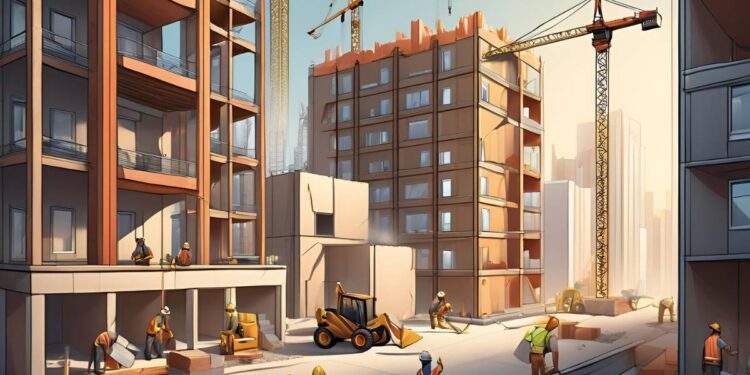This cutting-edge method provided by 3D printing technology is revolutionizing the way structures are conceived and erected, delivering a multitude of benefits in terms of efficiency, cost-effectiveness, and sustainability. What was once a vision of the future is now increasingly tangible. In this article, we will delve into the evolution of construction, focusing on the influence of 3D construction firms and 3D cement printing technologies.
Emergence of 3D Construction Firms
Leading the charge in this technological evolution, 3D construction firms harness advanced 3D printing techniques to create everything from simple residential dwellings to expansive commercial edifices. These companies utilize state-of-the-art 3D printers to layer materials such as concrete, leading to constructions that boast unmatched accuracy and efficiency. This groundbreaking implementation is indeed transformative, addressing many longstanding challenges in the construction sector.
Among the foremost leaders in this arena is CyBe Construction, a prominent 3D construction firm and innovator in 3D concrete printing technology. With their forward-thinking methodologies and state-of-the-art technology, CyBe is redefining norms in the construction field, rendering the process of erecting complex edifices more streamlined, quicker, and economically viable.
Importance of 3D Cement Printers
3D cement printers play a pivotal role in this progression within the construction realm. These specialized devices are designed to accommodate the unique properties of cement and other construction materials, facilitating the precise layering and sculpting needed for effective 3D printing. CyBe Construction provides an array of advanced 3D cement printers capable of generating high-quality structures with remarkable efficiency.
Equipped with cutting-edge software and robotics, these printers can produce intricate designs with impeccable precision. Printing materials directly on-site reduces the need for transportation and logistical efforts, enhancing both the efficiency and sustainability of the overall construction process.
Advantages of 3D Construction
A key advantage of integrating 3D printing into construction is the significant reduction in costs. This technology minimizes the dependence on manual labor, curtails material wastage, and reduces errors, leading to lower overall expenses. The precision inherent in 3D printing further ensures that resources are utilized more effectively, contributing to cost savings.
Conventional construction techniques often demand substantial time and labor. In contrast, 3D printing facilitates rapid construction timelines, drastically cutting down the duration necessary to complete building projects. This technology can execute complex designs in a significantly shorter timeframe compared to traditional methods, enabling swifter completion of projects.
3D printing also opens doors to innovative structural designs. It empowers architects and engineers to create intricate and advanced buildings that might be challenging or even impossible to achieve through traditional means. This design flexibility fosters the development of unique and creative structures, pushing the boundaries of architectural possibility. Moreover, 3D printing presents a more eco-friendly alternative for the construction industry, which is known for its substantial environmental impact. The method utilizes fewer resources and generates less waste than traditional construction practices. Additionally, 3D printers can incorporate sustainable materials, reducing the overall ecological footprint of construction activities.
The impact of 3D construction firms and 3D cement printers is evident across a wide array of practical applications. From affordable housing initiatives to large-scale commercial projects, 3D printing is proving to meet diverse construction needs effectively.
“`


